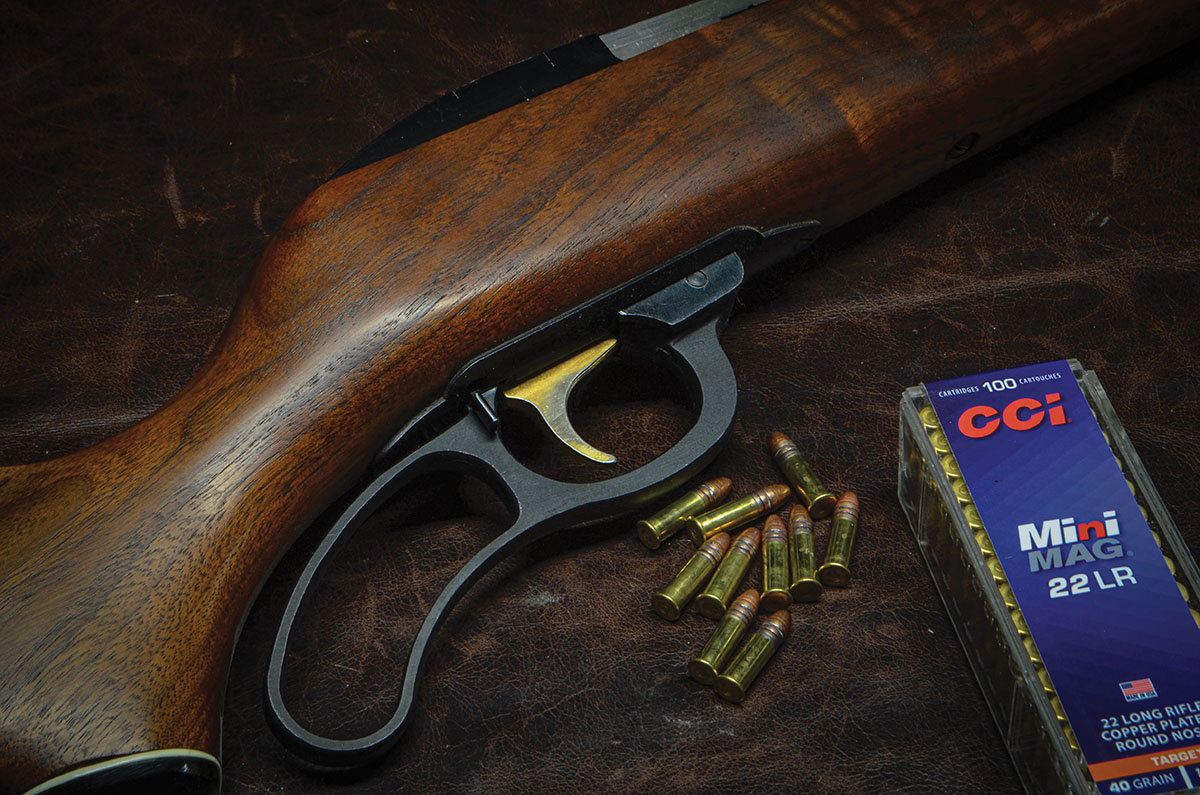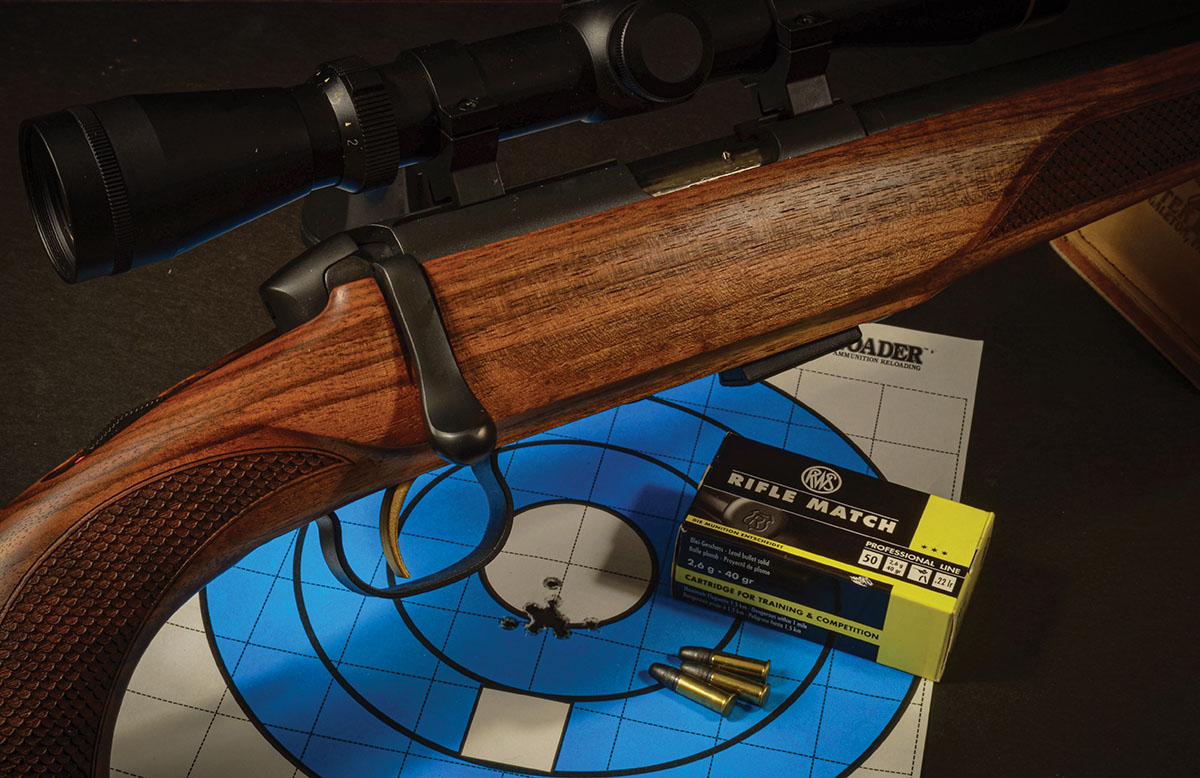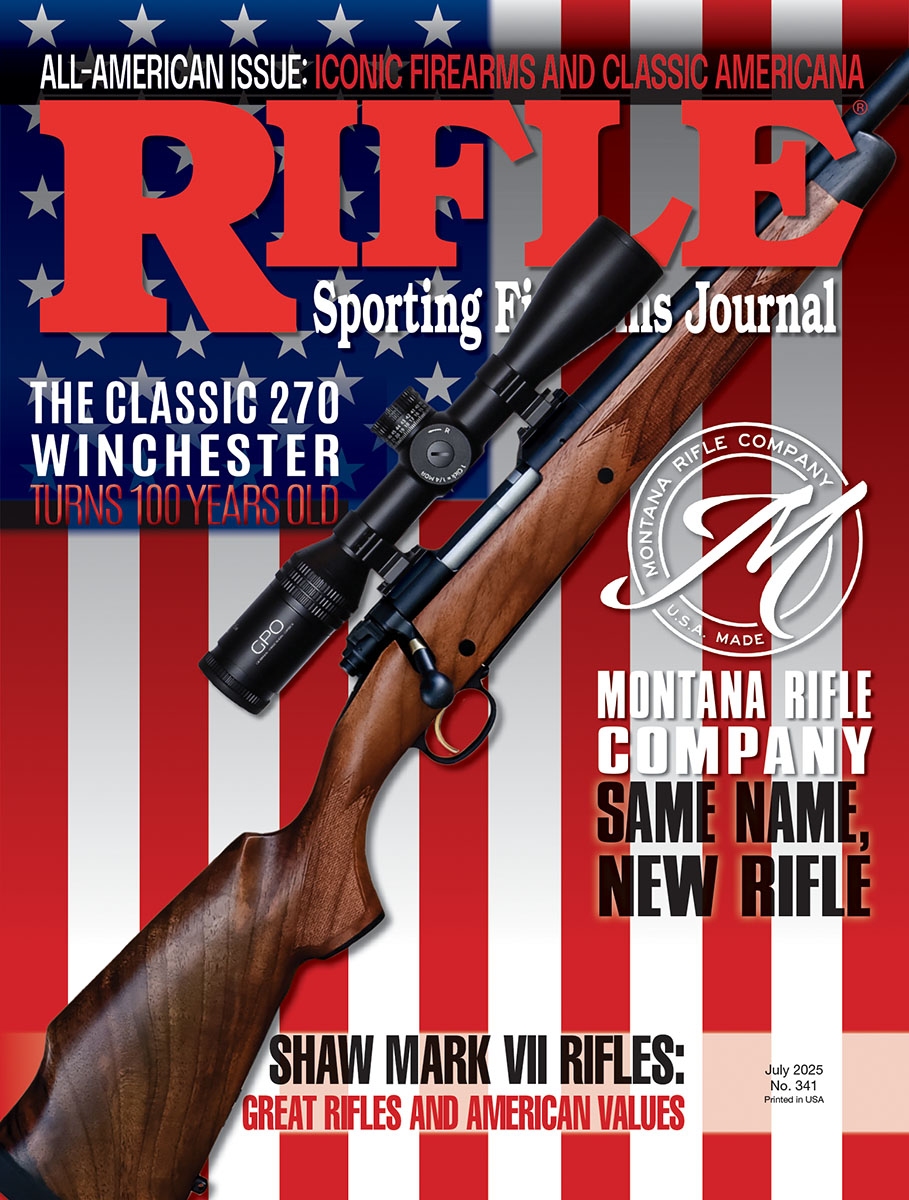Walnut Hill
What Every Guy Needs
column By: Terry Wieland | July, 25

A typical combination consisted of a bolt-action 30-06, a 12-gauge pump and a .22 rifle of some description. In fact, it was hard to make a case for much of anything else.
Such an article allowed the author the scope to express his particular views on anything and everything, and invariably sparked a rush of letters to the editor, which was all to the good from a magazine-management point of view. Plugging the article on the cover increased magazine-rack sales, since everyone wanted to know if his particular pet was “ideal.”
I can’t imagine what such a three-gun list would consist of today. Somewhere, I’m sure, would be an AR and a 6.5mm of some description. Anyway, over the last 50 years, rifles and shotguns have become increasingly specialized, and less and less adaptable to “all-around” use, so today’s lists could be anything.
The one common denominator, however, would be the .22. Everyone needed one then, everyone should have one today, and trust me on this, as you get older, you’ll find yourself turning to your .22 for a fun outing more often than your 300 Blackout.
A quick scan of the websites of America’s domestic gunmakers, including Ruger, Savage, Browning, Winchester and Henry, shows all offering a pretty nice .22 of some description – bolt, lever, semiautomatic – and ranging in price from $350 to more than a grand. Believe it or not, given the turmoil in the American firearms industry over the past 50 years, this is a better selection and probably of overall better quality than one could find in the 1960s. If one were to do the calculation, one would discover that,
allowing for inflation, they have not increased in price at all. In fact, I did just that and, as a rule of thumb, comparing 1965 to 2025, simply multiply by ten. So, a rifle that cost $35 then would be $350 today, and that’s pretty much in line with list prices now.
All of this is great if you are a new-gun guy, which I am not. At least, not generally. Old rifles are simply more interesting than new ones. You can speculate about who made them, who owned them, and where they’ve been. Combine this bit of romance with the undoubted quality of largely hand-made items, and you’ve discovered the lure of gun collecting.
There are some really interesting old .22s around. Some were long-lived, beloved classics, like Marlin’s Model 39, while others were short-lived curiosities, like that company’s Model 57. If you want to compare old-time workmanship with the shortcomings of gunmaking in the early 1960s, get an old Model 39 and compare it to a Model 57. I have one of each, and I like them both, but picking up the Model 57 after handling the Model 39 (from the 1930s) always makes me wonder, “How could they?”
The relative quality is reflected in their prices at auctions and on the used-gun racks: The Model 57 was produced for less than a decade, but as few of them as there are, you can get a decent Model 57 for maybe a quarter of what you’d pay for an old Model 39, given comparable condition.
The earlier Model 56 had a clip magazine, while the Model 57 used the more common tubular magazine with greater capacity. There was a sister rifle, the 57M, chambered in 22 WMR, and the centerfire Model 62. All used a short-throw lever mechanism, but that was not enough of a selling point to keep them in production for long. In fact, I never could figure out why it was a selling point at all. In a lifetime of using lever actions from Marlin, Winchester, and Savage, I’ve never thought, “Gee, I wish the lever didn’t swing out so far.”
By the way, rumor has it that Ruger, which now owns Marlin, may bring back the Model 39 at some point. It would be expensive, of course. The 39 traces its antecedents to the Model 91 and its successor, the Model 92. The Model 91 was used by America’s greatest rifle shot, Annie Oakley, and photos abound of her with her trusty Model 91. Made almost wholly from machined parts of good steel, hand-fitted by expert craftsmen, and with an American black walnut stock, the Model 39 set the standard for .22s for a century – even up against giants like Winchester and Remington.
It foundered in the end because Marlin simply could not sell it at a price that covered its rising cost of production. With today’s CNC machinery and manufacturing techniques, it seems to me Ruger could resurrect it, but they’d have to see a profit in it, and gun-company executives tend to be more hard-headed about such things than I am.

To me, a utility .22 such as one might carry in the woods, or wandering the back pasture, should have iron sights and work well with them. Fit a scope, and it’s awkward to carry; overcome this by adding a sling, and guaranteed, it will be on your shoulder when it should be in your hands, ready to be swung into action.
The inherent carrying qualities of the Marlin 39 make it ideal for this, and I figure I’m unlikely to take a shot with a .22 beyond 75 yards anyway. The 39’s external hammer helps, too; I’d rather carry a rifle with a round in the chamber and the hammer at half-cock than depend on a safety catch with an internal striker.
A funny thing is that when we’re young, we always seem to yearn for something better, more sophisticated, greater firepower, more accurate. In that regard, the Steyr is the perfect counterpoint to the Cooey single-shot .22 I had when I was a kid. Certainly more accurate, with a vastly better trigger pull, and of course, it has a scope. However, it’s really too sophisticated for everyday, casual use.
My experience in Africa with professional hunters who guided for critters like Cape buffalo or elephants and who might be called upon to deal with an attacking buffalo at an instant’s notice, is that their rifles, usually big doubles, were as high quality as they could afford, but also uncomplicated. They were Holland & Holland, Rigbys, Army & Navy, Isaac Hollis, Joseph Lang; John Hunter habitually carried a Charles Boswell boxlock 500 Nitro Express, while Chris Dandridge has a Chapuis. All very high quality, but very simple: Double triggers, no scopes, no slings. (Slings? Ugh!)
When a Cape buffalo comes boiling out of the bush with no notice whatsoever – an old bull who’s been wounded, or has a toothache, or just takes a dislike to you – instant action is required, or you get pounded. Of course, I’m not saying you need that with a .22, but I want my walking-around gun to be along those lines.
Some of the .22s available today have those qualities. The Henry, for example, has all the virtues of a Winchester 94, and those are ample. If you like semiautomatics, the Ruger 10/22, probably the most ubiquitous .22 around, has more than proven itself.
One thing’s for sure: It would be a lot easier to pick a new .22 for our imaginary “ideal battery” than to pick just one rifle and just one shotgun.


